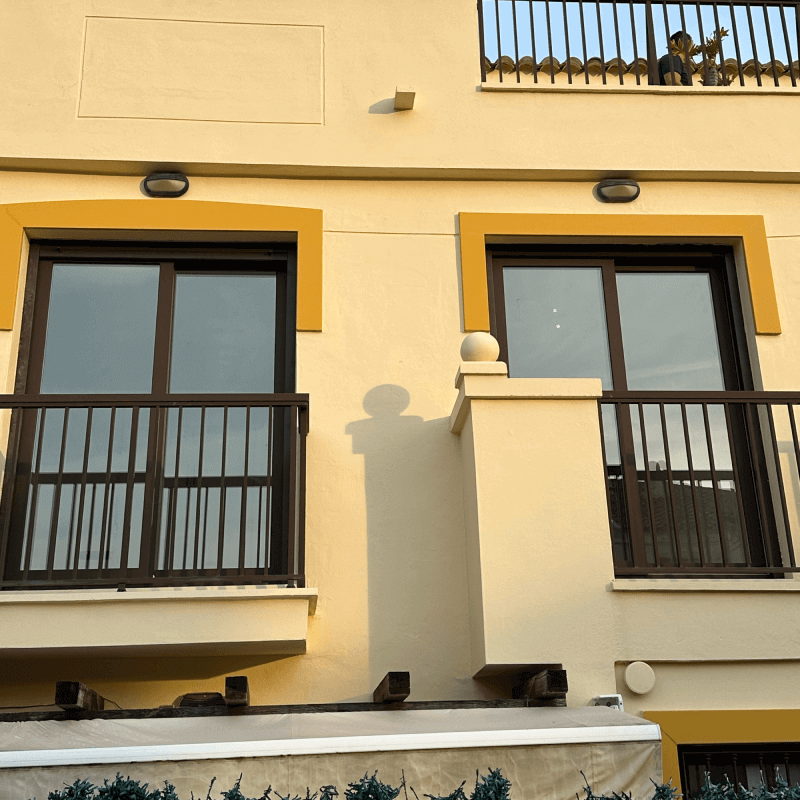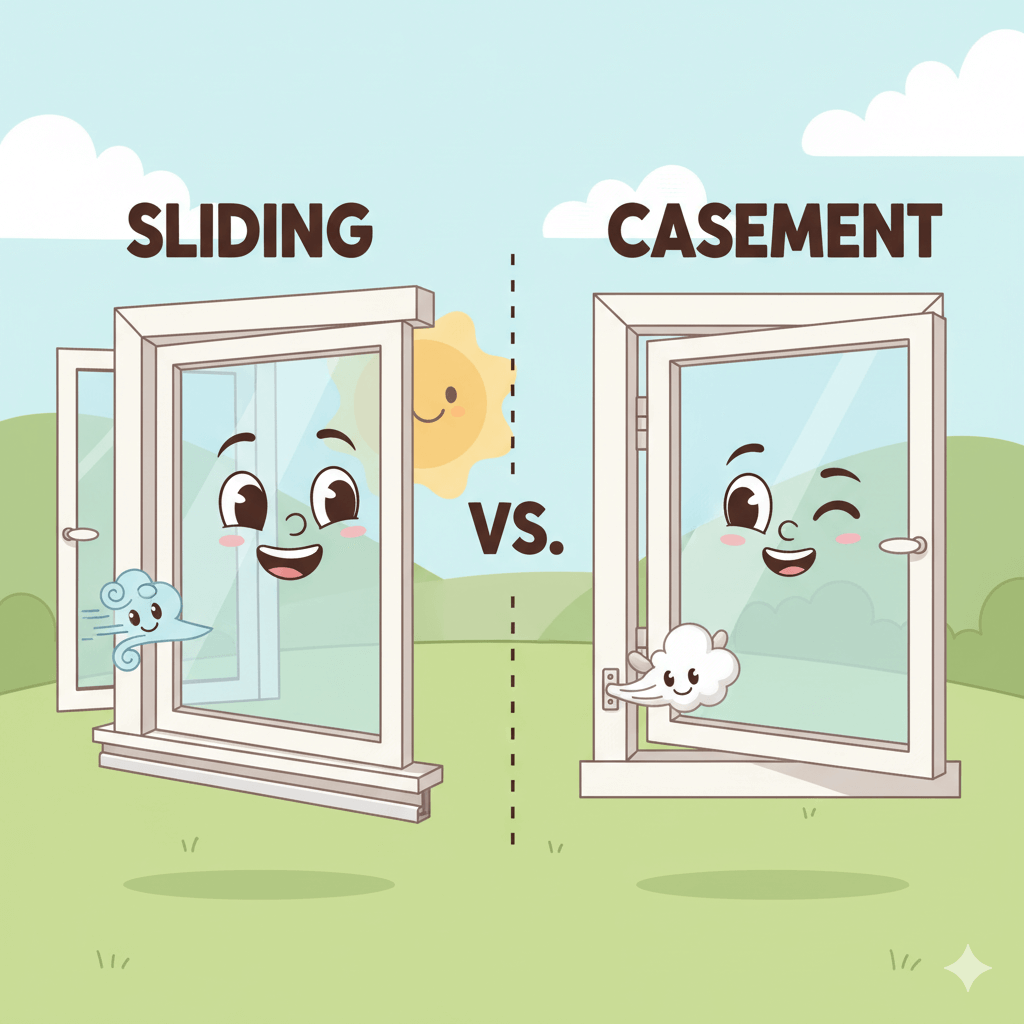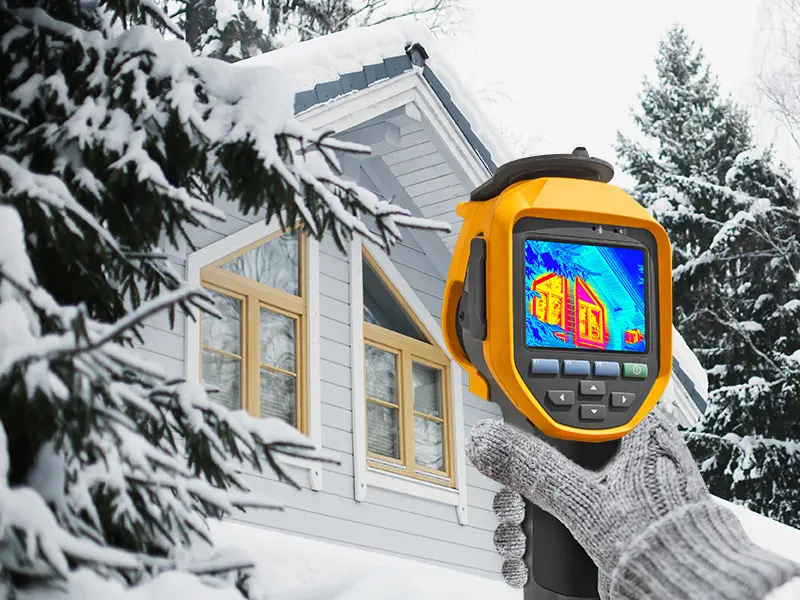Panoramic windows and patio doors: how to bring Spain into your home
· María Fernández · General knowledge · 8 min read
A floor-to-ceiling glass wall, with orange trees and Mediterranean sunshine beyond, is the dream of many who move to Spain. But panoramic glazing requires careful consideration: the wrong choice can turn your home into a greenhouse in the summer and a refrigerator in the winter. We’ll explore how to make large windows comfortable and safe.
Panoramic Windows – Beauty That Has a Price
Panoramic windows begin where the glazing exceeds 2 meters. Modern villas on the Costa del Sol feature glass walls 2.5-3 meters high, spanning the entire width of the living room. The view is breathtaking, but physics is inexorable: the more glass, the more difficult it is to control the room’s temperature.
A square meter of a standard wall insulates 10 times better than the same area of even the highest-quality double-glazed windows. Therefore, a house with south-facing panoramic windows in Alicante can use 2-3 times more electricity on air conditioning than a similar house with standard windows. Electricity bills in the summer easily exceed 200-300 euros per month.
There is a solution: solar control glass with a coating that reflects up to 70% of thermal radiation while allowing light to pass through. Visually, it has a slight greenish or gray tint, almost invisible from the inside. This glass adds 80-150 euros per square meter to the cost of the window, but reduces the load on air conditioners by 40%.
Another important consideration is strength. For panoramic windows, tempered glass at least 6 mm thick is used, or better yet, laminated glass (two panes of glass with a film between them). If this glass breaks, it will shatter into small, blunt pieces or remain suspended by the film rather than falling in large shards. This is a safety requirement, especially if there are children in the house.
Frames for panoramic windows present a separate engineering challenge. PVC profiles over 2.3 meters high require steel reinforcement, otherwise they can sag under the weight of the double-glazed unit. Aluminum performs better due to its natural rigidity, which is why 80% of panoramic structures are made from it.
The cost of panoramic glazing starts at €600 per square meter for simple aluminum double-glazed systems. High-quality systems with energy-saving glass and thermal breaks cost €1,000-1,500 per square meter. For a living room with 15 square meters of glazing, this means an investment of €15,000-20,000 in windows alone.
Patio Doors — the Boundary Between Home and Garden
Patio doors are more than just large windows with a walk-through feature. They must withstand constant use, provide easy access to the garden, and reliably protect the home. In Spain, where the terrace is used as a full-fledged room eight months a year, choosing the right door is critical.
Sliding patio doors are the most popular solution. Doors up to 3 meters wide each create a 6-meter-wide passage. In summer, this blurs the line between home and garden. These doors weigh up to 200-300 kg, so the quality of the rollers and guides determines how easily the doors open.
Lift-and-slide systems are more expensive than standard sliding systems (starting at €1,200 per m²), but they provide a seal similar to that of regular windows. When closing, the door lowers 1-2 cm and presses against the frame along its entire perimeter. This is important for homes in Madrid or mountainous areas, where winter nights can be cold.
Folding accordion doors allow you to fully open the doorway by folding all the doors to one side. This is a striking solution for large openings of 4-6 meters, popular in restaurants and modern villas. The downside is the complex hardware and high price (starting at €1,500 per m²). Each door has its own mechanism, which may require adjustment.
Swinging French doors are a classic solution for small openings up to 2 meters. They provide better sealing and are less expensive than sliding systems (starting at €500 per square meter). However, open doors take up space on the terrace and in the room, and can slam in strong winds.
The threshold of patio doors deserves special attention. Traditional systems have a threshold of 5-7 cm, which is a constant source of tripping for guests. Modern barrier-free systems create a threshold that is almost flat (1-2 cm), but require high-quality patio drainage to prevent water from seeping into the house during rain.
Sun protection is a must-have
In Spain, panoramic windows without sun protection are a guaranteed way to overheat the room. Even the highest-quality solar control glass cannot withstand the direct rays of July, when the sun shines 14 hours a day.
External blinds or roller shutters are the most effective protection. They block the sun before it heats the glass. Adjustable aluminum slats allow for controlled light without completely blocking the view. Motorized external blinds cost €200-400 per square meter, but they reduce the room temperature by 5-7 degrees.
Awnings (retractable fabric awnings) are popular for patio doors. They create shade in front of the house, turning the patio into a comfortable area even at midday. A high-quality 4-meter-wide awning with an electric drive and wind sensor costs €2,000-€4,000.
Internal curtains or blinds are less effective—the sun has already heated the glass, and the heat has entered the room. However, they are less expensive and do not require approval from the management company in apartment buildings. Special thermal curtains with a reflective coating can reduce heat by 30-40%.
Smart glass with variable transparency is a future technology that is already available. At the touch of a button, the glass becomes frosted or darkened. The cost is still high (from €800 per square meter), but this solution is gaining popularity in luxury projects.
Security of Large Glass Surfaces
Panoramic windows on the first floor are a potential vulnerability for a home. Standard glass can be broken by a stone in a second. Therefore, laminated glass (triplex) at least 8-10 mm thick is essential for the first floor.
Anti-vandal film is an affordable solution for improving the security of existing windows. Applied to the inside, it will prevent the glass from shattering even after an impact. Professional film installation costs €50-€80 per square meter.
Alarm systems with breakage and opening sensors are a must for a country house. Modern systems integrate with smart home systems and send notifications to your phone. Installing a basic system for 5-6 windows costs from €1,000.
Roller shutters not only provide sun protection but also a physical barrier against burglary. Reinforced roller shutters with a lifting lock are virtually impossible to open without special tools and a lot of noise.
Ventilation with panoramic glazing
Large, non-opening glass surfaces create ventilation issues. The house becomes stuffy, and condensation forms on the glass. There are several solutions, and it’s best to combine them.
Integrated ventilation valves in the frames provide a constant air flow without opening the windows. They are especially important in bedrooms—fresh air flows in even at night when the windows are closed for safety. The cost of a valve is €100-200.
Opening sections in panoramic structures are planned in advance. Typically, 30-40% of the area is made openable. These can be tilt-and-turn sashes at the top or sliding sections at the sides.
A supply and exhaust ventilation system with heat recovery is a comprehensive solution for modern homes. It ensures constant air exchange without heat or cold loss. Installing a system on a 150 m² house costs €5,000-8,000.
Real-World Examples and Calculations
Let’s consider a typical project: a 40 m² living room with panoramic glazing facing south, 6 meters wide, 2.5 meters high. Glazing area: 15 m².
Budget option: Aluminum sliding doors without a thermal break, standard glass, internal blinds. Cost: €9,000. Problems: overheating in summer, cold in winter, high electricity bills.
Optimal option: Aluminum with a thermal break, solar control glass, external electric blinds. Cost: €18,000. Result: comfortable temperature all year round, 40% lower electricity bills.
Premium option: Lift-and-slide system, triple-glazed windows with argon, smart glass with adjustable transparency. Cost: €30,000. Bonuses: perfect insulation, smartphone control, high-status solution.
Common mistakes when choosing
Saving on glass with expensive frames is a typical mistake. Glass takes up 80% of the window’s area and determines its characteristics. It’s better to install simple frames with high-quality glass than the opposite.
Ignoring the cardinal directions leads to overheating or insufficient light. South-facing windows require maximum sun protection, north-facing windows can be made with standard glass, while east- and west-facing windows need protection from the low morning and evening sun.
The lack of mosquito nets in patio doors is a problem that’s only remembered in the summer, when the house is infested with mosquitoes. Built-in roller screens for large openings cost €500-1,000, but this is an investment in a peaceful night’s sleep.
Final Recommendations
Panoramic windows and patio doors are an investment in quality of life, not just a structural element. They determine how you use the space, how much you pay for electricity, and how comfortable you feel at home.
Don’t try to save on everything at once. Prioritize: if a view is important, invest in large glazing; if comfort is important, invest in high-quality glass and automation; if security is, invest in triplex windows and an alarm system.
Be sure to look at completed projects in your region. What looks great in a catalog may be impractical in real life. Talk to homeowners with panoramic windows about their experiences after 2-3 years of use.
Plan for panoramic glazing during the design phase of your home. Adding large windows to an existing building requires structural reinforcement and costs 30-50% more.




